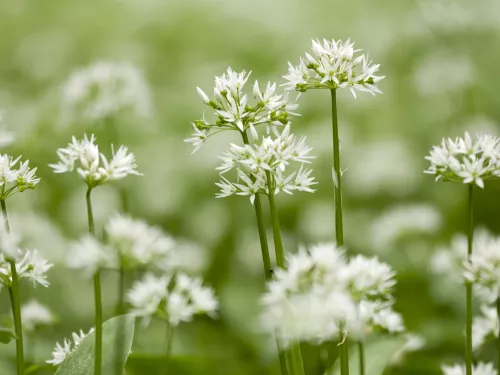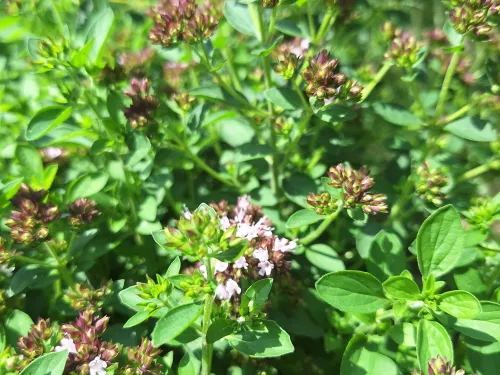Wild cherry
The mass of white, frothy blossom on a wild cherry is a sight to behold. Planted as an ornamental tree, it also grows wild in woods and hedges. Its red fruits are the edible cherries we know and love.
The mass of white, frothy blossom on a wild cherry is a sight to behold. Planted as an ornamental tree, it also grows wild in woods and hedges. Its red fruits are the edible cherries we know and love.
The bright yellow daffodils that adorn our roadsides and parks are likely to be garden varieties. Head to a woodland or damp meadow in North or South West England, or Wales, to see a true wild daffodil.

In April and May, our ancient woodlands are awash with the white, starry flowers and smell of wild garlic. Millions of bulbs can exist in just one wood, giving rise to dazzling 'white carpets'.
A sprawling plant, wild liquorice often has large, kinked stems. It favours woodland, scrub and grassland habitats on chalky soils - look for pea-like flowers and pods. This liquorice is not edible, though!

Wild marjoram is actually the same aromatic herb as oregano which is used in Mediterranean cooking. Its small, pink flower clusters can be seen on chalk and limestone grasslands in summer.
Wild privet is a shrub of hedgerows, woodlands and scrub, but is also a popular garden-hedge plant. It has white flowers in summer and matt-black berries in winter that are very poisonous.
An inconspicuous tree for much of the year, the Wild service tree comes to life in spring, when it displays pretty, white blossom, and autumn, when its Maple-like leaves turn bright crimson.
The Wild strawberry produces miniature, edible versions of the juicy red fruits we so enjoy. Gathering wild food can be fun, but it's best to do it with an expert - come along to a Wildlife Trust event to try it.
The delightful fragrance of wild thyme can punctuate a summer walk over a chalk grassland. It forms low-growing mats with dense clusters of purple-pink flowers.
A recent colonist to South East England, the metallic-green Willow emerald damselfly spends much of its time in the willow and alder trees that overhang ponds, lakes and canals.
The willow tit lives in wet woodland and willow carr in England, Wales and southern Scotland. It is very similar to the marsh tit, but has a distinctive pale panel on its wings.
A summer visitor, the willow warbler can be seen in woodland, parks and gardens across the UK. It arrives here in April and leaves for southern Africa in September.